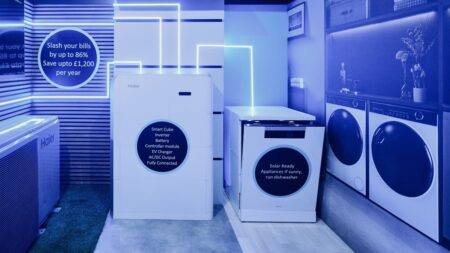Connected tech is the natural evolution of our homes
The demise of the smart home is once again making headlines. Citing sales-rank data from Amazon, an article on Thinknum claimed the smart home’s heyday is over because consumers are buying fewer Philips Hue light bulbs and Nest thermostats from the online retail giant.
Perhaps late-adopter interest has waned, it posits. Maybe everyone that wanted these devices has already bought them, and probably the public is scared of the smart home, given the very real concerns over data privacy.
Leaving aside the privacy issue for now, this is all quite possible when it comes to specific brands. But to extrapolate that because a couple brands aren’t doing as well anymore means the entire smart home is going the way of the dodo is short-sighted. It’s like saying because Saab and Hummer are now defunct, no one is going to drive any more.
Read This: The best cheap smart home devices
The smart home is not one or two shiny gadgets. The smart home is a natural evolution of our homes. In fact, calling it the smart home is probably its biggest curse. While it makes it easier for journalists and analysts to classify and dissect the category, it’s not a reflection of reality.

Take the kitchen. Some lament the lack of development in the “smart” kitchen. Why don’t we have ovens that can shop, cook, and serve our meals? Why can’t my fridge tell me what I need to buy at the grocery store? The biggest hit at last year’s CES Unveiled (possibly because everyone was very hungry) was a bread machine that made multiple loaves of bread. They called it a BreadBot, but it was just a big, fancy oven.
One reason we don’t have a truly Smart Kitchen yet is because our kitchens are already the most technologically advanced space in our home. Today’s ovens do a lot for us (heck, they even clean themselves). Then there’s microwaves, dishwashers, food processors, refrigerators, and so on; the kitchen is highly-automated, and a lot of this technology is relatively new and insanely useful. But it took a while to get there.
Prices are plummeting, products proliferating, competition heating up
When my grandmother (born 1918) got her first dishwasher in the early 1980s, she would leave it open and use it as a drying rack. That’s right, she put her clean dishes in the dishwasher to dry. She simply didn’t trust it to wash them. It didn’t take her long to get over her fear of unclean dishes in the face of the convenience it gave her, just as it isn’t taking homeowners long to realize that buying a doorbell that can tell you who is at your door when you aren’t home is simply a better doorbell.
From my perspective of covering the smart home space for 8 years, what’s happening isn’t that the smart home is faltering, it’s that the smart home is moving mainstream. Prices are plummeting, products proliferating, competition heating up, and the smart home is becoming the modern home.
Walk into a Home Depot today to buy a garage door controller and just try and come away with one that isn’t connected. Head to the sprinkler controller section and you’ll find the “smart” versions outnumber the “dumb” ones. While you still pay a premium for connected versions, that premium is much lower. Spend $40 on an Orbit you will spend two hours programming yourself, or $60 on a smart one that will do it all for you.
Consumers now have much more choice when it comes to connected tech. There’s a price point for every need and most budgets. For example, when I first wrote about smart thermostats in 2016 there were maybe six decent ones to review, costing $250 to $450. Today, there are at least 25 good connected thermostats, ranging in price from $99 to $300. People may not be buying as many Nests as they used too, but that doesn’t mean they’re not buying into the smart home.
Companies like Wyze, which stormed the smart home space with its incomprehensibly inexpensive cameras, sensors and smart bulbs, are showing us the future: connected products don’t have to be premium products. Yes, there’s still a niche market for expensive, beautifully-designed gadgets, but they aren’t for everyone. Even Google showed us this when it released the “budget” Nest E thermostat.
Ring, albeit boosted by the power of Amazon at its back, has also pioneered this model of giving consumers practical, smart solutions to real life problems at a decent price point.
Its security system, video doorbell, and relatively inexpensive camera and outdoor lighting range get you connected, whole-home security for a fraction of the price you would’ve paid for a CCTV monitoring system just a decade ago.
According to a recent report by the Consumer Technology Association, home safety and monitoring are the fastest growing segments in smart home. It also expects the consumer tech category as a whole to hit $400 billion for the first time, with smart home gadgets – including smart speakers and home robots – leading that push. And as all smart home enthusiasts know, once you get one or two of these gadgets in your home, they start to multiply like bunnies.
It’s time to recognize that while the smart home dominated by the high-end design and superb technology of the Nest thermostats and Philips Hues may have peaked, the smart home of our future – the modern home – is very much here. It just might not be the one we were expecting.





